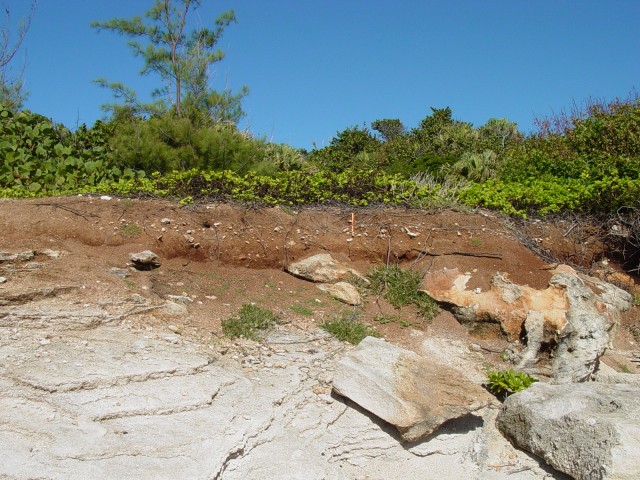Bermuda's golf courses sit on land that's (partly) an African import
Ars Technica » Scientific Method 2012-10-23

The characteristics of a region’s soils are largely controlled by two factors: climate and geology. Soils are mostly composed of broken-down minerals from the bedrock (along with, critically, organic matter), and the weathering process is driven by climatic conditions. Soils can also form within the sediments deposited in an area, however, as is the case in the flood plains of river valleys. And there are other things that can transport sediment to a new home—like wind.
This is what makes the soil of the island of Bermuda so interesting. It seems like they don’t belong. The island’s shallow bedrock is composed of gray limestone, mainly in the form of broken-up bits of skeletons from marine organisms—the same stuff that makes up the beach sand. The soil, however, is rusty-red and clay-rich.
The reason for this sharp contrast has long been debated, with two hypotheses gaining the most support. One possibility is that the limestone contains a fair amount of clay, which is left behind as the limestone dissolves. (Limestone weathers quickly in rainwater, as evidenced by hard-to-read gravestones.) In this view, it’s not that the clay soil “doesn’t belong”, it’s just that it’s concentrated by the removal of the other minerals.
Read 7 remaining paragraphs | Comments